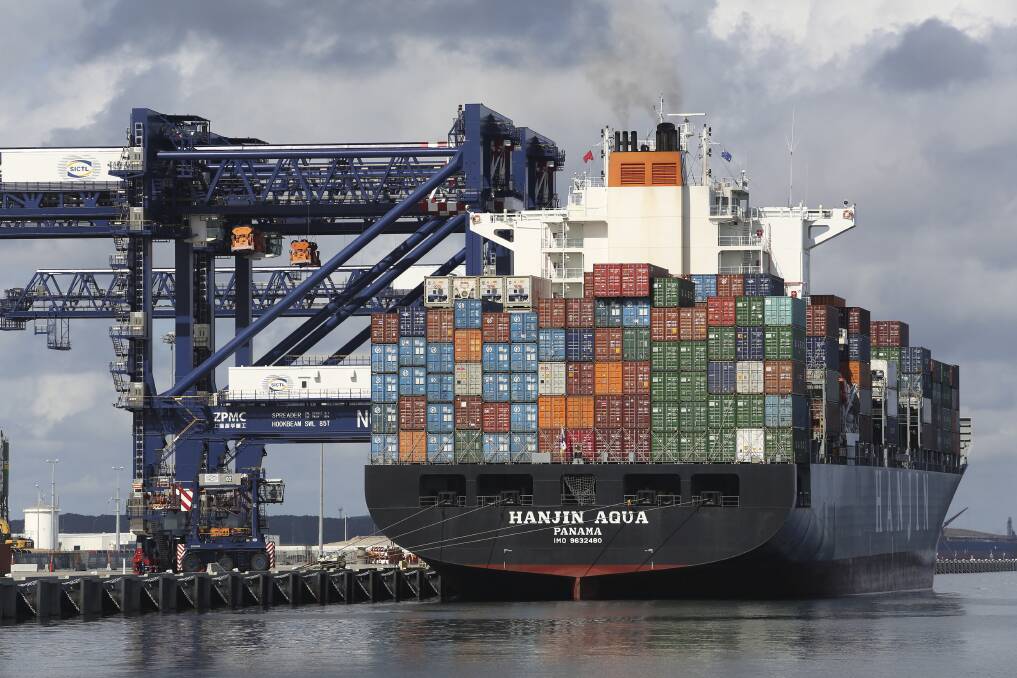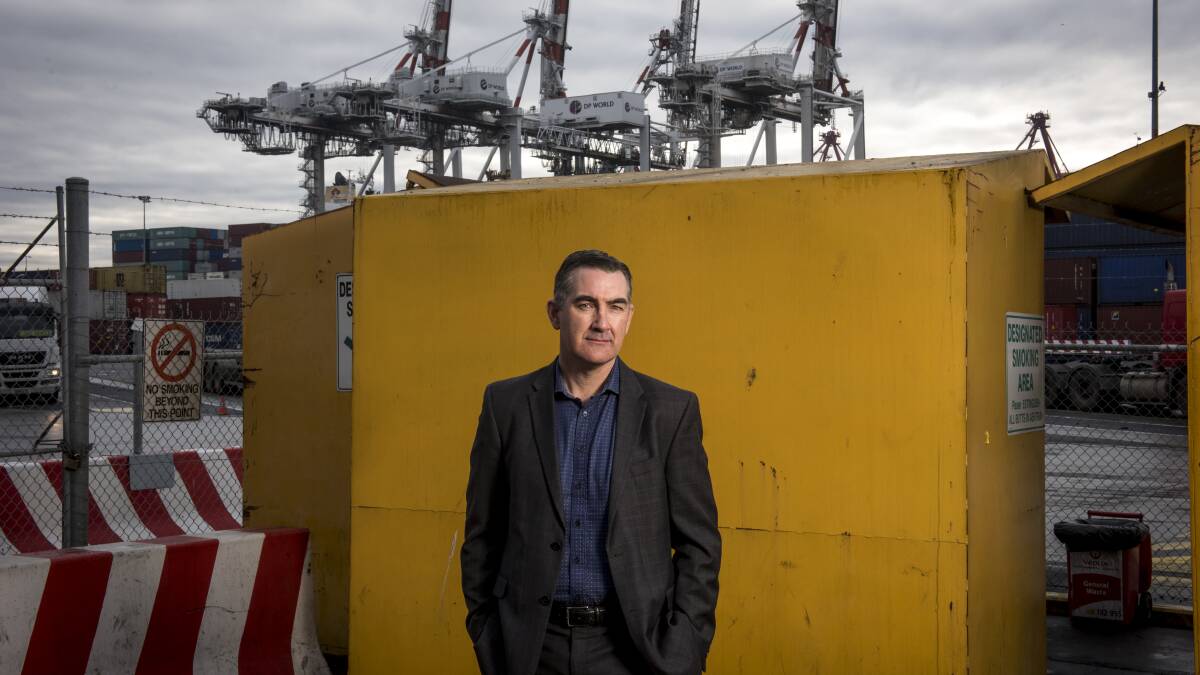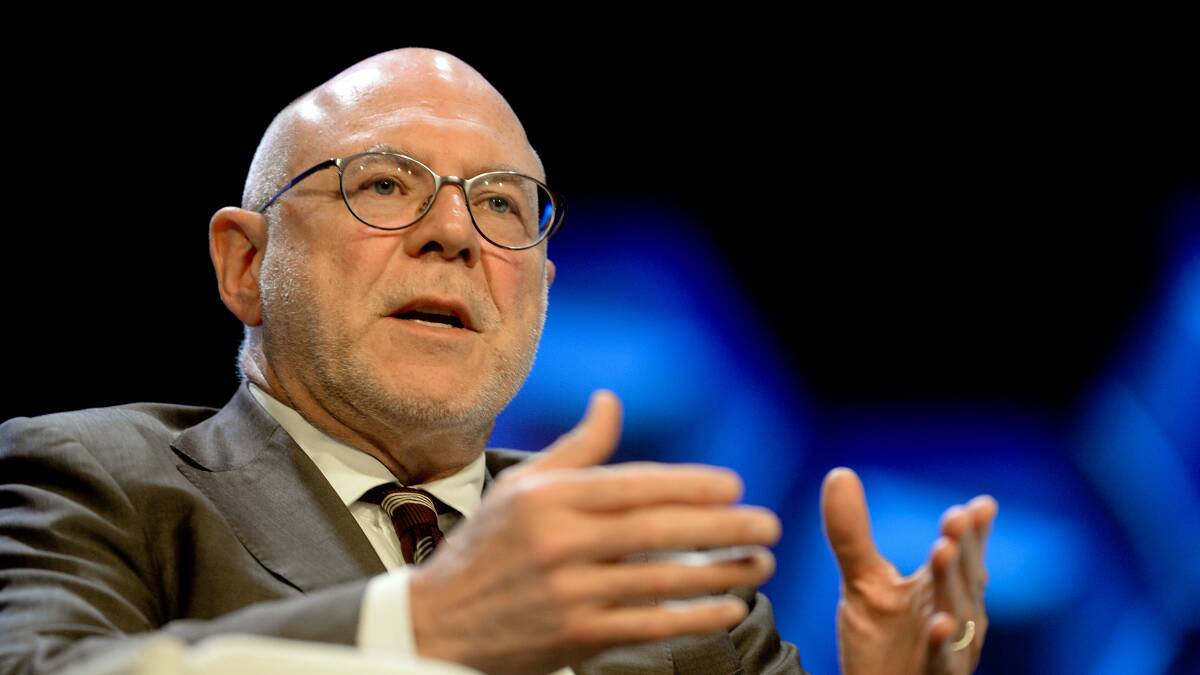
AUSTRALIA’S biggest stevedoring company, DP World, is apparently interested in setting up a container terminal in Newcastle.
Subscribe now for unlimited access.
$0/
(min cost $0)
or signup to continue reading
Fairfax Media’s Australian Financial Review reported on Tuesday that the Dubai-founded operator was “in early stage discussions” with the Port of Newcastle over a container terminal.
It said the company’s chief executive, Paul Scurrah, was “a recent convert” to Port of Newcastle’s “oft-crushed” container plans, citing constraints at Port Botany as one of his reasons.

While DP World declined to comment on the AFR article in a statement it provided to the Newcastle Herald, Port of Newcastle chairman Roy Green said his organisation was talking with two “high calibre operators” of container terminals.
“I can’t confirm or deny the identity of the proponents but we can certainly confirm that there is at least one proponent with viable plans for a container terminal and one other proponent who has expressed an interest in the prospect,” Professor Green said.
The confirmation is important because it shows that operators are interested in Newcastle despite the secret fee on container trade in Newcastle, uncovered by the Herald in 2016 after repeated denials by the state government.
- Read more: The 2016 article revealing the fee
DP World’s apparent interest follows confirmation last week that the Australian Competition and Consumer Commission had launched an inquiry into the fee, after years of saying it had no powers to intervene.
In a statement on Tuesday afternoon, DP World said: “It is fair to say that DP World Australia is in regular dialogue with its stakeholders and interested parties across the country on how to serve its customers, regionally as well, and how to deliver them the best outcome for the import and export of goods.
“Clearly that is best practice corporate planning. At this stage DP World Australia has nothing to further to say regarding the matter.”
DP World was formed in 2005 by the merger of two Dubai port companies. It now operates worldwide with more than 70 ports in 40 countries, with the capacity to handle more than 88 million containers a year. It operates container terminals at Botany, Melbourne, Brisbane and Fremantle, employing about 2000 people.
Last year it earned US4.7 billion ($6 billion) for an after tax profit of $US1.2 billion ($1.55 billion).
The Herald understands that any negotiations between the port and its potential container operators are covered by confidentiality agreements, but Professor Green said he would talk about the issue in general at a Newcastle Institute forum tonight at Souths Newcastle.
He will also unveil new figures he says throw a new and confronting light on the state government’s claim that all containers should go through Botany because most of the cargo is destined for Sydney.

Citing research commissioned by the port from Deloitte Access Economics, Professor Green said that once unpacked, 27 per cent of the goods are taken to areas that would be part of a “natural” Newcastle catchment.
The Newcastle catchment covers an area of northern and western NSW stretching from Moree to the north, Port Macquarie to the east, Bathurst to the south and Cobar to the west.
On exports, Professor Green said Sydney accounted for about 43 per cent of containerised export tonnage while the Newcastle catchment accounted for a “whopping” 38 per cent.
“The existence of a viable container terminal proponent has activated the ACCC’s interest in the fee as having the potential for a substantial lessening of competition were it to stop a proponent from trying to enter into competition with Botany,” Professor Green said.
- Read more: ACCC confirms Newcastle inquiry
He said the fee was a non-tariff barrier to NSW exports and a constraint on Newcastle’s ability to operate an efficient port, given that it had channel capacity to double the number of ship movements.
Former BHP public affairs official Greg Cameron, who first proposed the container terminal for the former steelworks site in the late 1990s, said from Canberra on Tuesday that the attitudes of some important players in the transport industry seemed to be changing when it came to the Newcastle proposal.
But he urged caution, saying: “For the last 20 years, Newcastle container port policy has been a pigs breakfast.
“A container terminal with a minimum capacity of 1 million containers a year should be operating now. But not with trucks.
“A Newcastle terminal reliant on trucks is little better than Port Botany. Let the job be done properly by replacing Botany’s trucks with a rail freight line between Newcastle and Port Kembla, via western Sydney.
“This line will allow every container in NSW to be railed. Investors, operators and government need to work collectively to enable all containers to be railed.”
Port Botany and Port Kembla were privatised together in 2013, raising $5 billion in a deal that secretly protected them from container competition by ensuring that any rival container terminal paid them a per-container royalty fee. Newcastle was privatised a year later for $1.7 billion with the new owner aware of the container handcuffs, but apparently content to operate the world’s largest coal port.
But doubts over the long-term future of coal – together with a growing belief in the financial viability of a northern container terminal – have led to increasing agitation over the fee, which would effectively double a Newcastle terminal’s operating costs and hand an estimated $1.5 million a ship straight to Botany’s owners.
The state government has continued to defend its container policy, which has Kembla as the next container port in NSW should there be an expansion beyond Botany.
But a review of the state’s freight and ports plan has given operators the chance to put fresh ideas to the government, with the Port of Newcastle lodging detailed submissions to this and other transport inquiries promoting its container plans.
The government’s support for Botany as the state’s sole container terminal has been based around the idea that 85 per cent of its containers are unloaded within 40 kilometres of the port, and that ships do not want to stop at “multiple ports”.
But Deloitte questions this, saying: “The significant potential of, and future role for, the Port of Newcastle appears poorly understood and an omission in current NSW Government policy documents.”
Port of Newcastle believes it needs a starting capacity of about 270,000 containers a year to be viable. Deloitte says Newcastle could handle 2 million containers a year, making it comparable with Botany, which shipped 2.4 million boxes last year. Deloitte says plans for Botany to ship 5 million boxes a year will dramatically worsen Sydney’s truck congestion.


